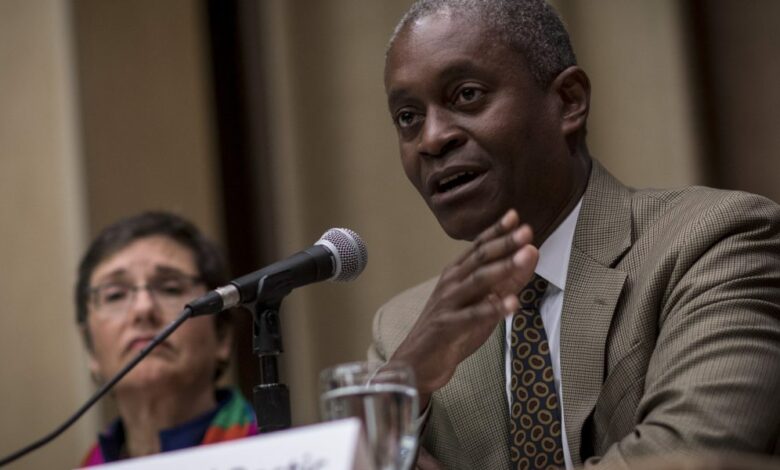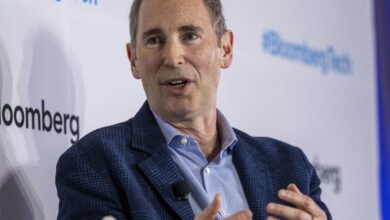Atlanta Fed president Raphael Bostic predicts just one rate cut this year


Observers expect the Federal Reserve to make three rate cuts this year, which many predict will start in June—but the president of the Federal Reserve Bank of Atlanta, Raphael Bostic, has some doubts about those cuts. Bostic now anticipates only one rate cut this year, according to comments he made to reporters on Friday.
“The economy continues to deliver surprises and it continues to be more resilient and more energized than I had forecast or projected,” Bostic said, according to Bloomberg. “And so as a consequence, I’ve sort of re-calibrated when I think it’s appropriate to move.”
Fed Chair Jerome Powell hasn’t committed to actually lowering interest rates this year, saying it is too early to do so at the moment and that the Fed is still eyeing key metrics like inflation and unemployment to make its decision.
Bostic, too, says it’s too early to tell, calling the decision to cut interest rates a “close call.”
“We will have to see how the data comes in over the next several weeks,” Bostic said.
In particular, inflation data, he says, isn’t quite on the trajectory he would have hoped. As of February, annual inflation stood at 3.2%, well above the elusive 2% average the Fed says its targeting. More worrisome was the fact that there was a slight uptick from the 3.1% inflation rate in January.
Bostic referred to these developments as “troubling.”
Bostic has on more than one occasion been cautious about predicting rate cuts. Earlier this month he said the Fed had “no urgency” to lower rates. He also said that if there were multiple rate cuts, they wouldn’t be in consecutive Fed meetings. Now that point is moot, considering he only forecasts a single cut in 2024. Last May, Bostic’s prediction that rate cuts wouldn’t happen at all in 2023, despite some chatter that it was a possibility, also proved to be accurate.
Last month Powell said it was still too early to determine if inflation was sufficiently curbed, saying he wanted “to see more good data” before he committed to lowering interest rates.
Bostic is not entirely sure inflation will continue to trend in the downward direction the Fed hopes. “I’m definitely less confident than I was in December,” he said.
The economy’s resilience, Bostic says, bolsters his prediction and buys the Fed some time before having to make a decision on when to cut rates. With the economy doing well “that gives us space for patience,” he said. “And we should just be patient.”
American consumers remain steadfast in spending through the start of the year. Retail spending ticked up 0.6% in February. Overall consumer spending was up a full percentage point in February after a minor decline in January.
The unemployment rate, which has been encouragingly low, also climbed slightly higher. In February it stood at 3.9%. But that number is still considered low for a period in which the Fed is focused on reducing inflation. Usually as inflation trends down, unemployment is expected to spike. So a slight rise, especially given how historically low unemployment remained during the steep drop in inflation from June 2022 to June 2023, is considered good.
“If we have an economy that is growing above potential, and we have an economy where unemployment is at levels that were deemed to be unimaginable without pricing pressures, and if we have an economy where inflation is moderating…those are good things,” Bostic said.
Source link




